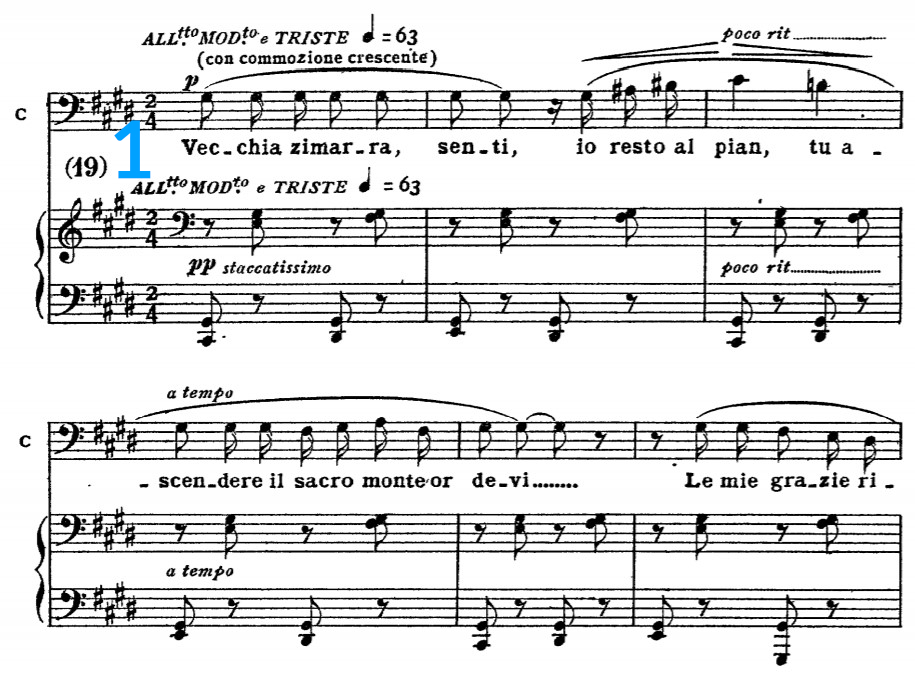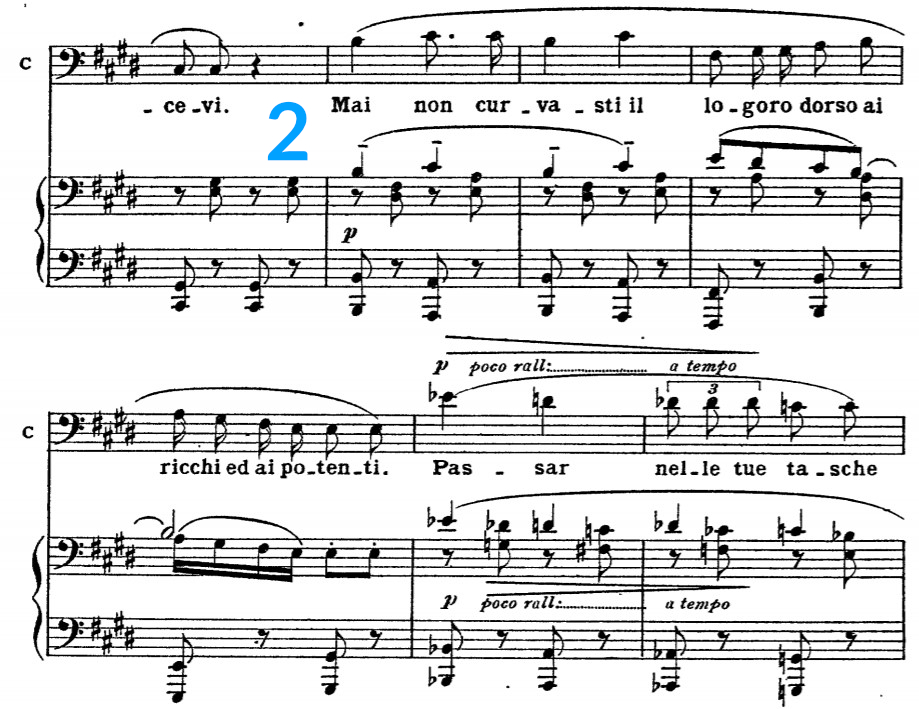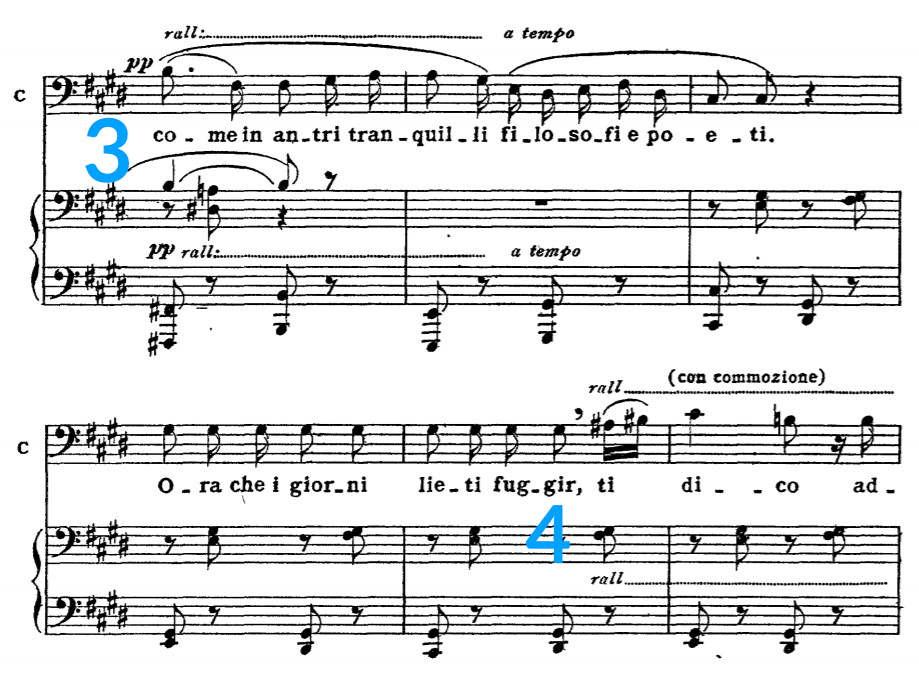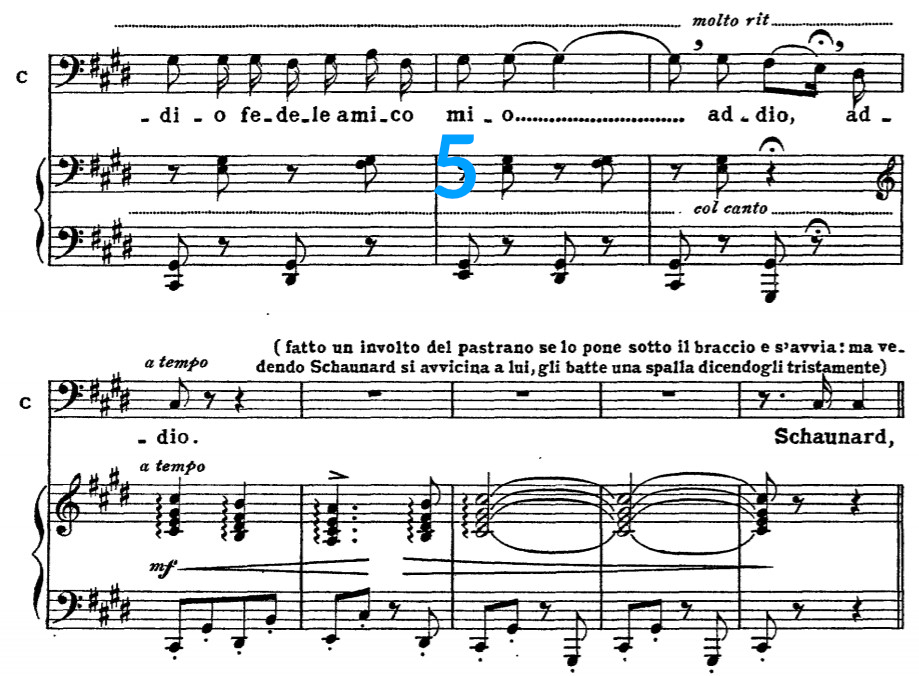
Aria guides: Vecchia zimarra
How-To
- I find it so incredibly touching that Colline, the philosopher who overthinks by trade, finds such gravitas in the selling of his coat. It’s not a small gesture, of course; it’s cold out, and Colline is poor, so sacrificing his coat is a big deal. But I think it helps to sing this aria to a friend, not a garment. It’s a bit overdone, a bit exaggerated in sentiment, but that’s who Colline is; he overthinks his own facial hair, so of course he’d made a ponderous moment out of trying to help save a life. That’s all to say that the stakes need to be high, here (1). This is a goodbye aria - almost a funeral dirge, really - to a living, generous being that just happens to resemble a coat. Oh, and when you get to the poco rit at the end of the first line, make sure you sing right through the space between C-sharp and B-natural; it’s easy to fall flat if you let your energy go too soon.
- A lot of basses find this tessitura tricky here (2). Be specific with the two vowels in “mai”, and make your life a bit easier by turning “non curvasti” into “nong curvasti”; it’s easier to keep the legato with that [ŋ] sound. Also, be diligent and sing a good [u] vowel in “curvasti”, even though it’s a short note. And as you finally relax at the end of the phrase, think ahead and keep some height in your sound. You just have to pop right up to the high E-flat on “Passar”, which is a task on the best of days.

- Enjoy this portamento on “come” (3). Puccini asks for it specifically, and this is Colline’s moment to remind the audience that he’s more than a tenor’s bearded buddy. Be exact about tempo when you get to the “filosofi e poeti” bit; the a tempo is important to a conductor, so save your stretchiness for the stuff before.

- Vowel, vowel, vowel, here. Puccini gives you time with his rallentando, so take the space and spin three great [i] vowels to get you through “ti dico”. Basses often find the ascent the hard part, but don’t let up before you’ve sung the B-natural at the end of the word.
- This phrase isn’t much to look at (5), but it’s a heartbreaker if you commit to that long note on “mio”. If it were me singing this (if only) I’d try and get away with holding that note for as long as a conductor would let me; however long you have, spend the note actively renewing and renewing that [o] vowel, so it stays energized and in tune. Finally, for the two “addios”, it’s your moment of tragedy, so don’t let anyone rush you; technically, you get to decide on the first one, and the conductor gets to dictate the second one. Don’t put up a fight - you’re not the tenor, after all. (Tenors, I jest, mostly.)

To cap it off: I like how James Morris sang this aria, back in 1982 at the Met.


Comments